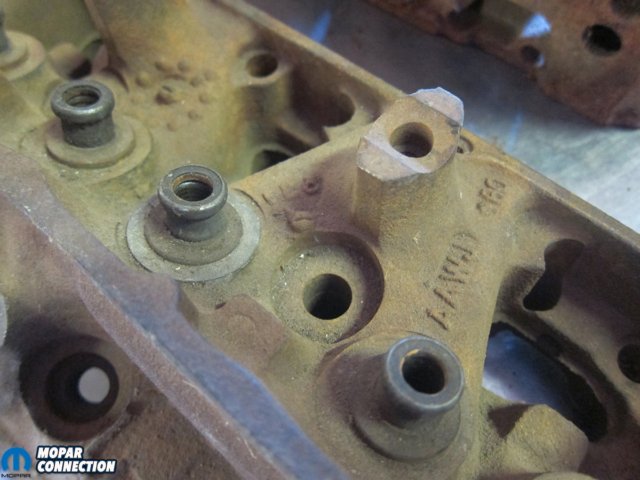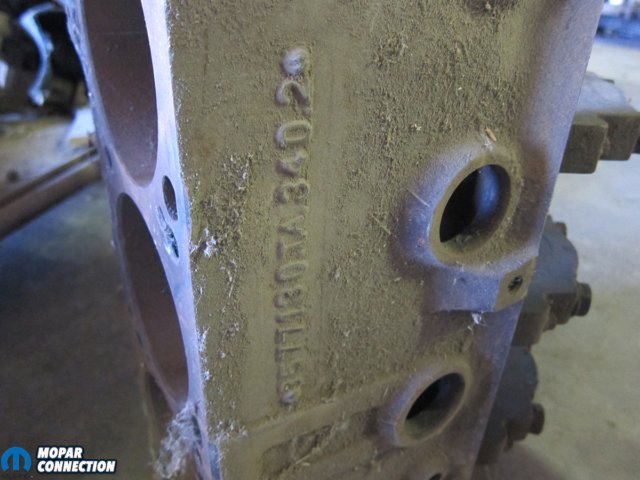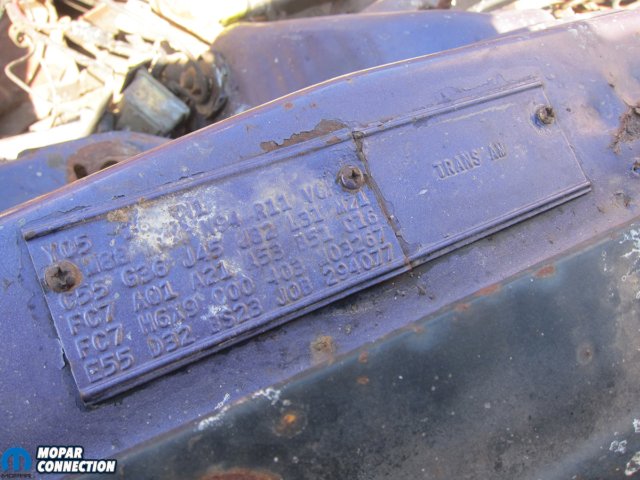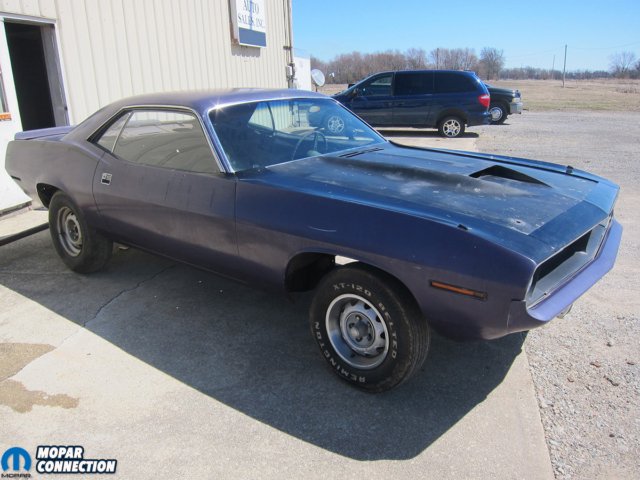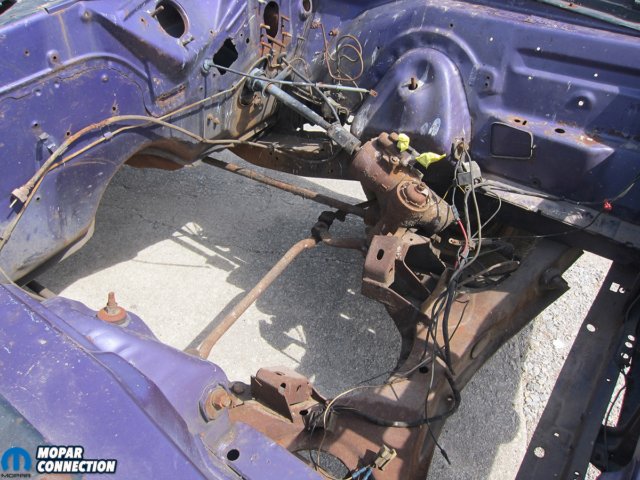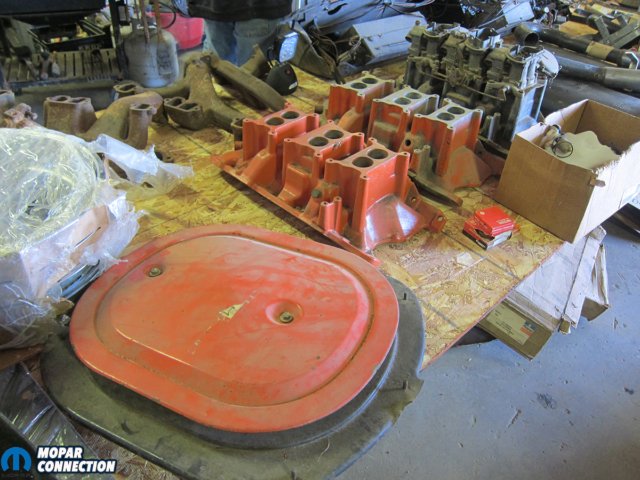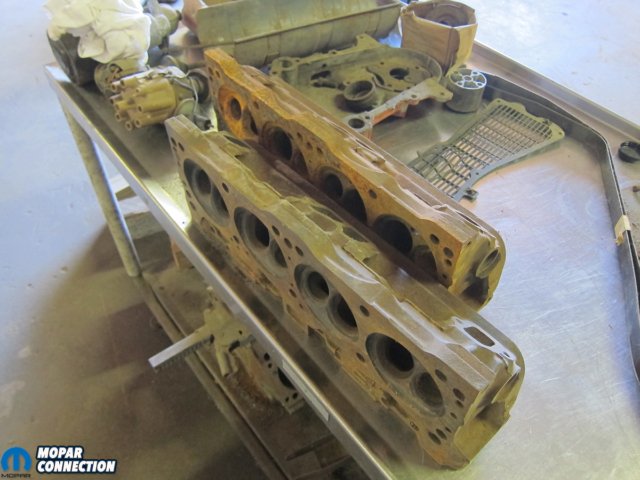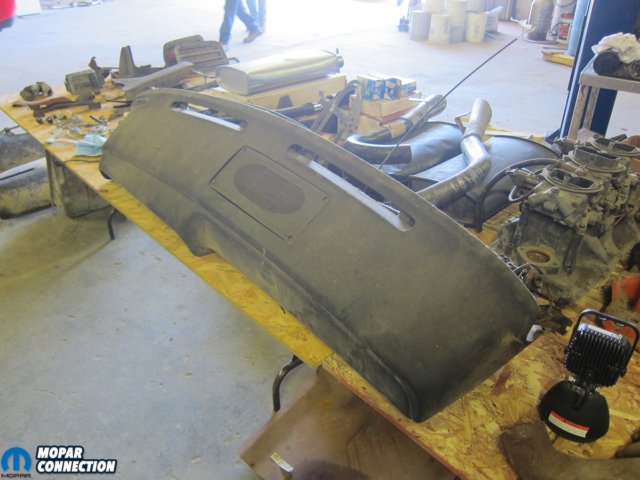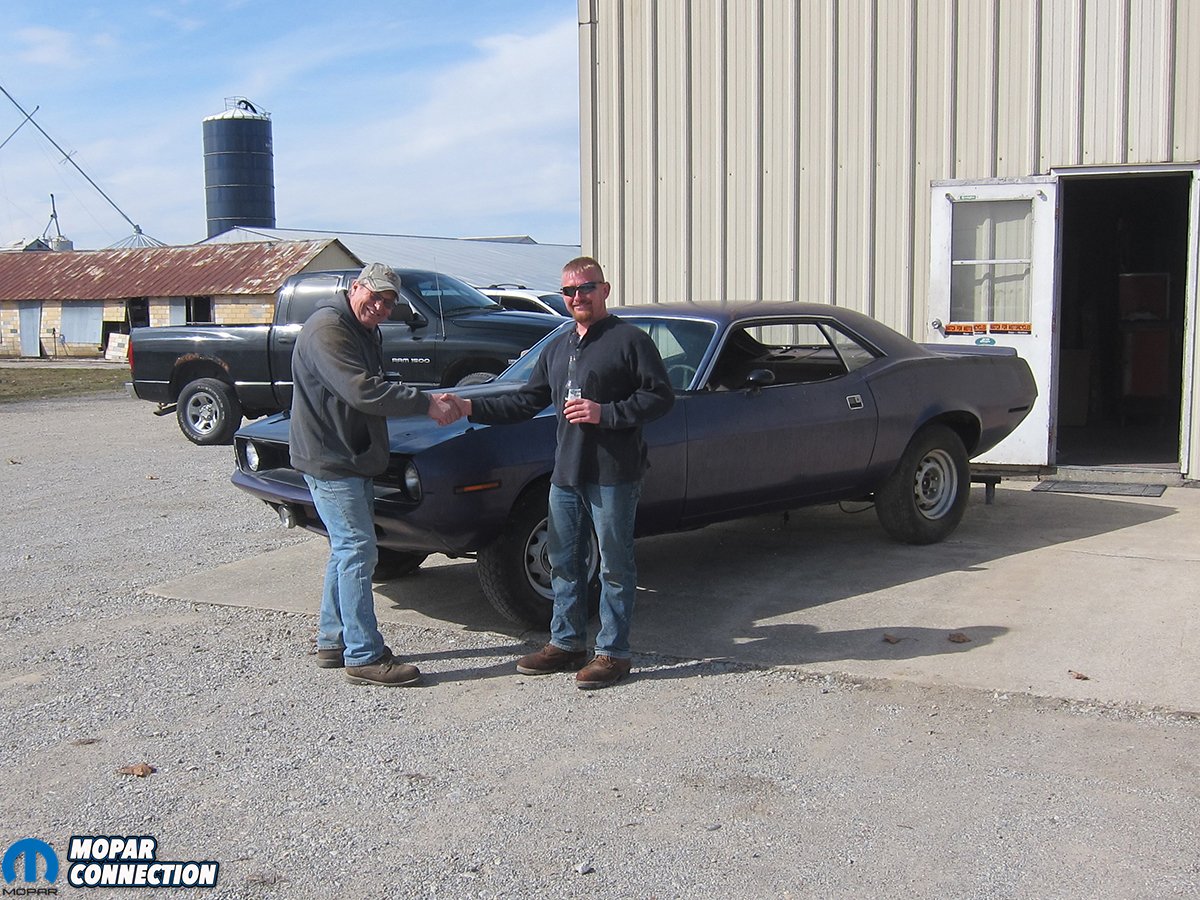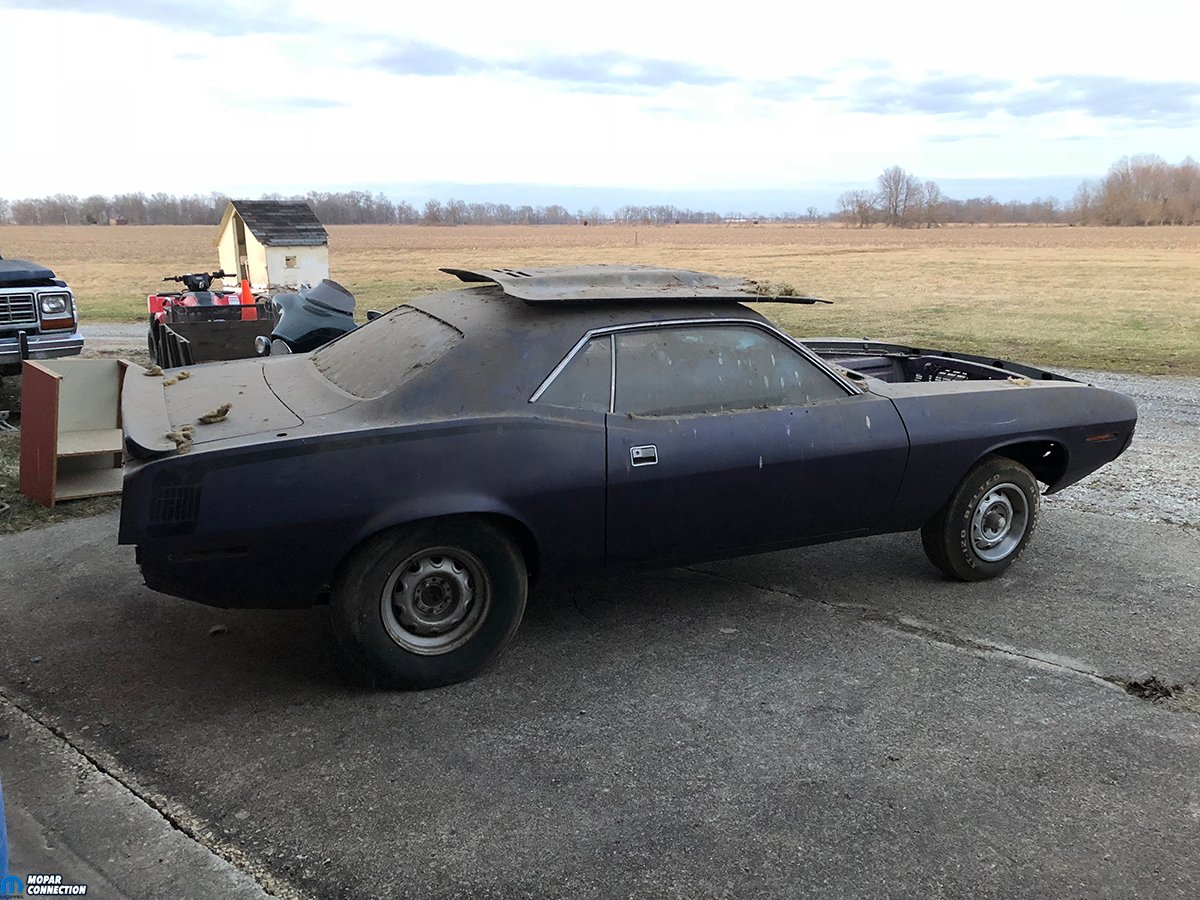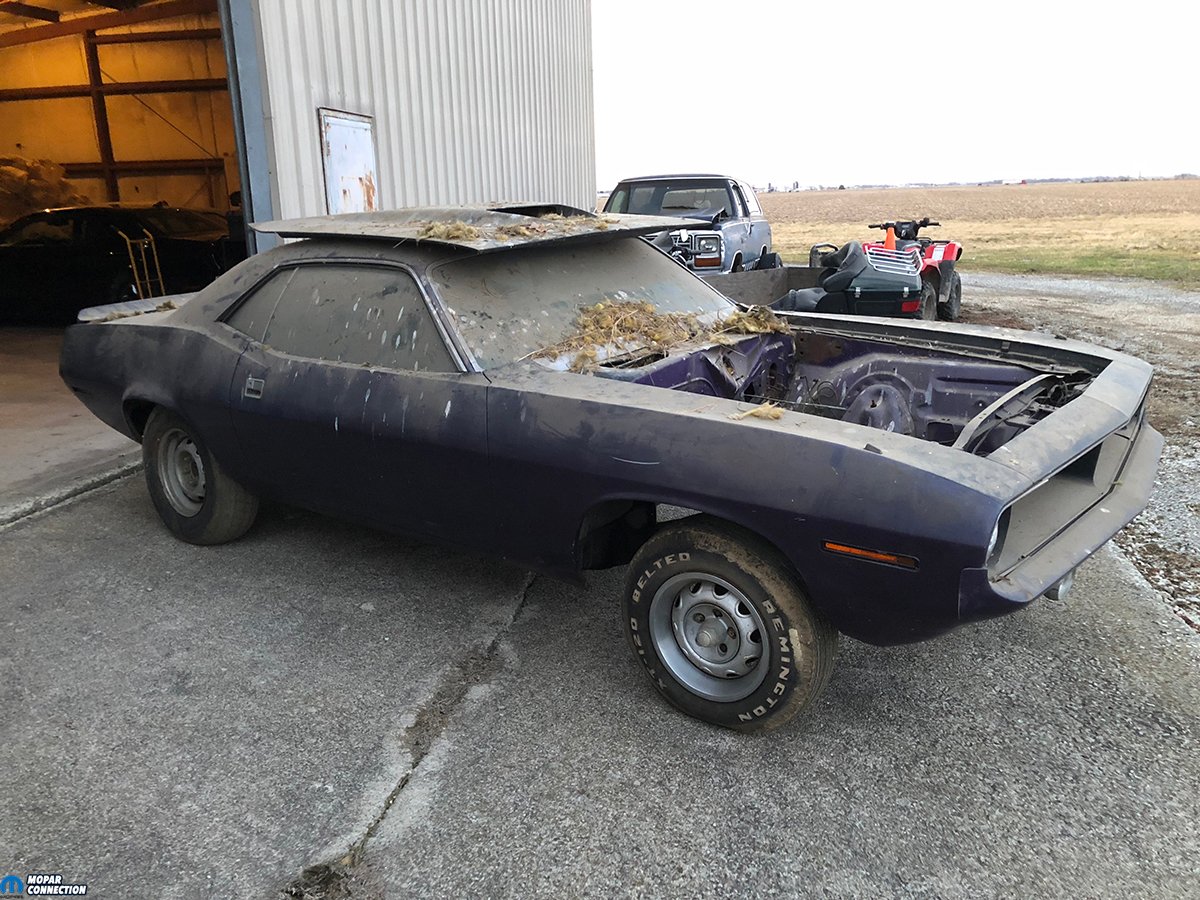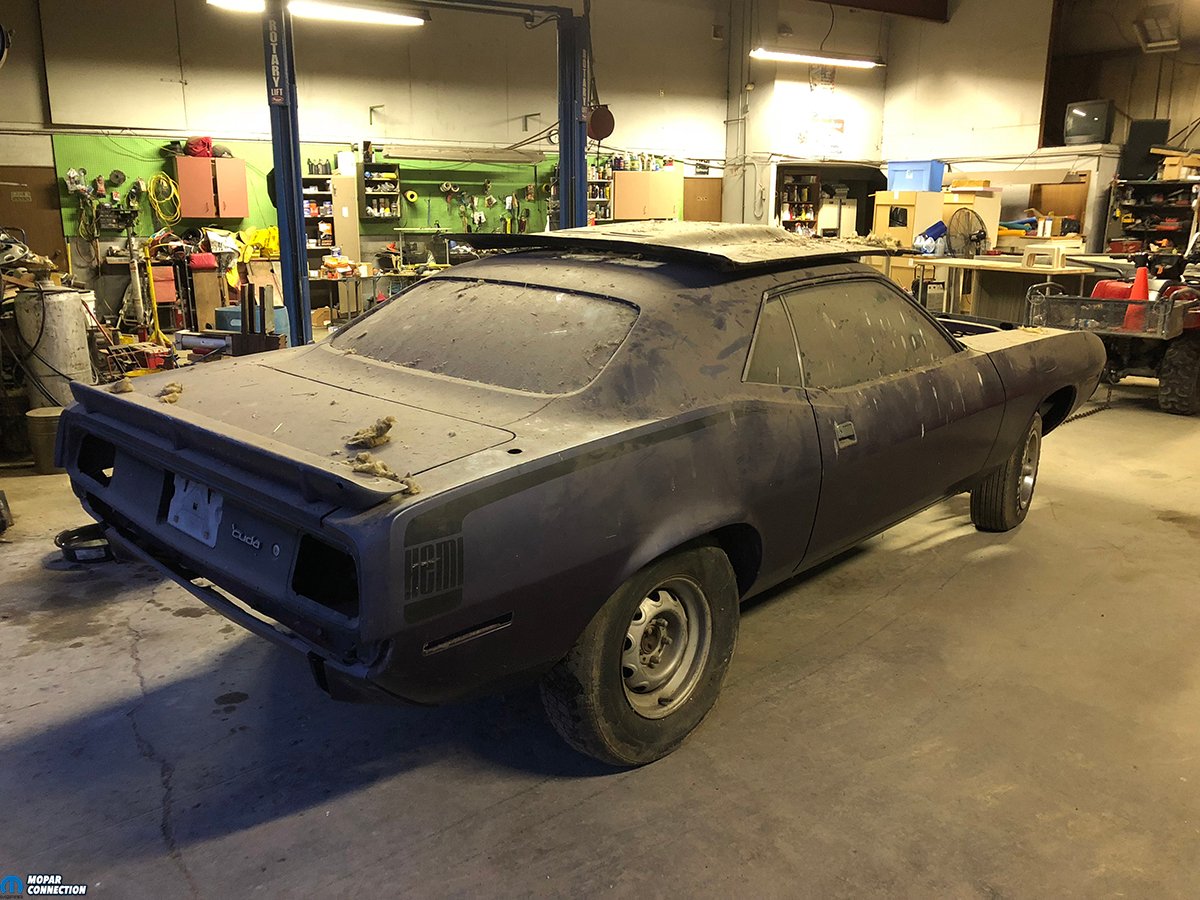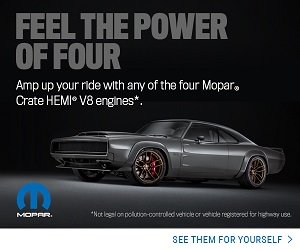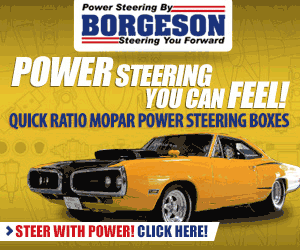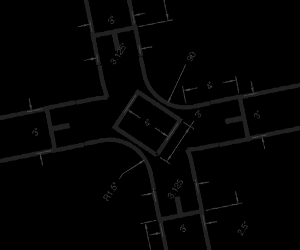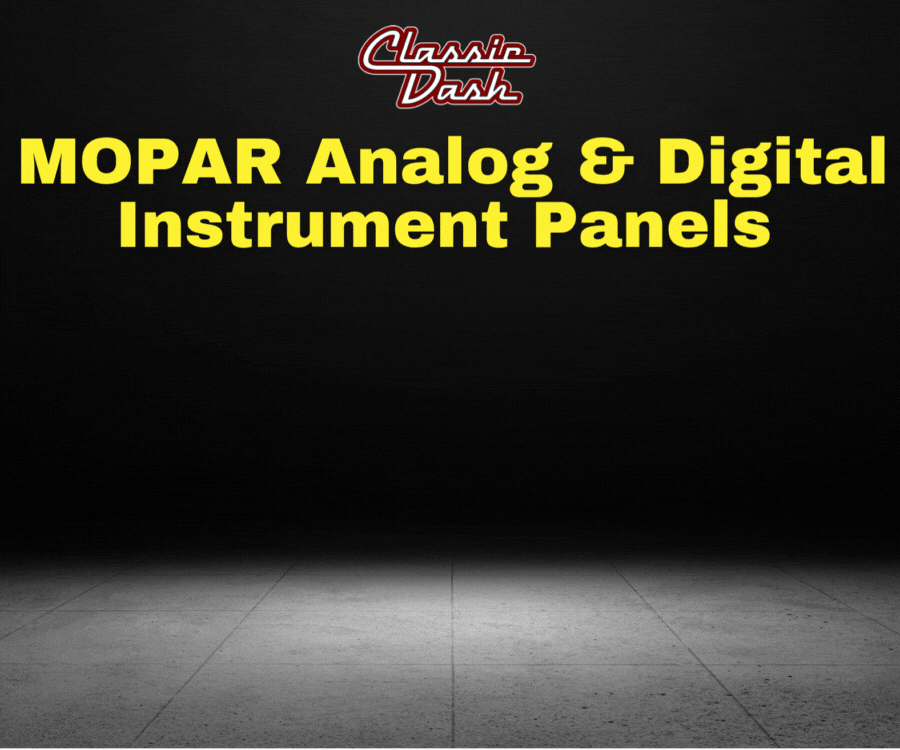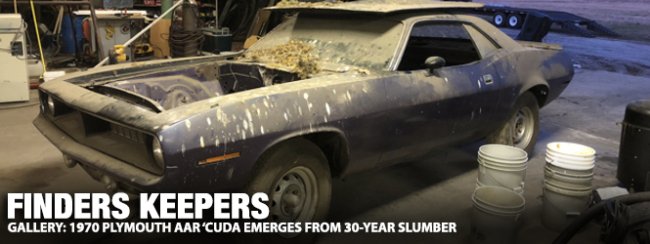
Through the ages many Mopars were bought, bartered, and beat on. Even rare birds like Hemi Chargers, 440 Six-Pack Road Runners, AAR ‘Cudas and others were victims of abuse. At one time these low production cars were not as desirable as they are today and stored away without thought. Many of these cars are still hiding in garages and barns throughout the country and with some luck you might find one. Mark Meyer caught some luck and picked up a 1970 Plymouth AAR ‘Cuda that was hiding away.
Like many of us, Mark Meyer is a long-time Mopar man. “My dad always bought Dodge cars. When I was sixteen years old, I bought a 1965 four-door Polara,” recalls Mark of his early lead-foot days. Not long after that, a ’70 Road Runner came into the fold and he was hooked from there.

The story goes that this particular In-Violet E-body was originally from California. Apparently, a Hemi took up residence in the front end early on after the original 340 met its untimely demise. In true ’70’s fashion, someone took a torch to the rear quarters to roll out some radical flares, then resprayed it in the original FC7 purple hue with a Hemi hockey stripe out back. After that, the history is a little foggy, but it somehow made its way to Rockville, Indiana.
There, it sat until the late ’80’s when the next owner, Dean, picked it up. “I bought it as a project. The engine and transmission were gone. It was a pretty nice shape car. If I remember right, it only had like forty-thousand miles on it,” he recalls. Dean started collecting parts for it but got bitten by the drag racing bug and started searching for a race car. The recently acquired ‘Cuda was put on the back burner.
Mark, on the other hand, had a Challenger drag car project, but was heading in the other direction. “I had no desire to spend a hundred dollars a weekend to go racing and, plus, I couldn’t drive that car on the road.” As fate would have it, Mark and Dean crossed paths and it didn’t take long for a trade to work itself out. “I went over and looked at the ‘Cuda and [Dean] showed me all the parts he had. One thing led to another, and I was like, ‘Sounds good to me!’ I don’t remember what the exact figures were on the trade deal, but that’s how I ended up with the ‘Cuda and Dean ended up with that Challenger.”
“Basically, I brought it out here and parked it in the back of the shop and it sat back there,” Mark explains. Thankfully, those years of storage inside on a concrete floor saved most of the sheet metal. Even the paint still looks presentable, though it carries a few shed scars. Aside from the aforementioned quarter flares and small holes in the front floor boards, the body is in remarkable shape. Even the rear-mount radio antenna hole, an AAR-specific feature, is still present along with the requisite extended cable.
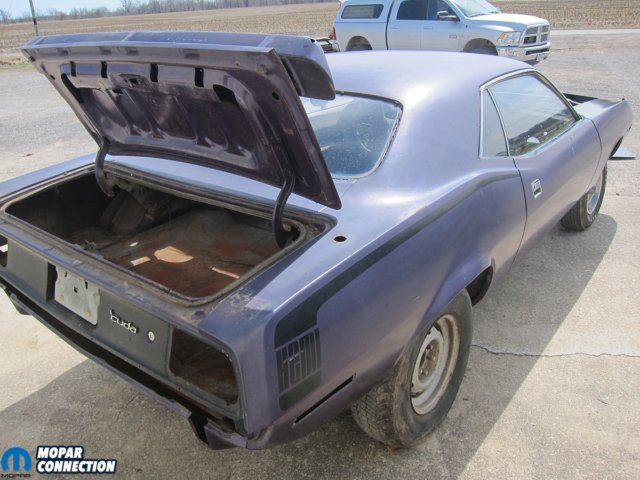
Only 2,724 of these All American Racers were built in 1970 to compete in the SCAA road racing series. All received the 340 Six-Pack powerplant, but just 1,604 were equipped with the 727 automatic like this particular example. The fender tag shows that this menacing machine came with few fancy trinkets. The Trans Am package (A53), duck wing rear spoiler (J82), side exhaust (N44), fiberglass fresh air hood (N94), and longitudinal stripes (V6H) were all standard with any AAR or T/A.
The interior is pretty Spartan with a standard non-Rallye dash, black vinyl bucket seats, a console (C16), the light package (A01), and an AM radio (R11). A keen eye might have noticed the Elastomeric painted front bumper (A21), but it’s a little strange that the rear one was standard chromed steel.
Many of the AAR-specific items stayed with the car or were accumulated over the years. A dig through the barn yielded a 340 Six Pack air cleaner base, several small block Six-Pack intakes and carburetors, high performance exhaust manifolds, NOS mufflers and side pipes, and most of the interior. The special quick-ratio steering box was still bolted to the car along with the original fiberglass hood and rear spoiler.

Even the hard-to-find 340 Six-Pack block and heads were squirreled away under a thick coating of barn dust. Though the block isn’t numbers-matching for the car, it has the correct 3577130TA340 casting number and shows signs of racing heritage with four-bolt mains. The heads are special too with their offset pushrod holes that required special rocker gear.
Fortunately, the AAR should be back on the road soon enough, but under new ownership. With a bittersweet goodbye, Mark sold the ‘Cuda to make room in the barn for 707 ponies in the form of a Torred 2016 Hellcat. New owner Jeff Judy made Mark an offer he couldn’t refuse and plans to begin the restoration as soon as possible. Stay tuned as we’ll be looking for this one to be back in action within the next couple of years.




